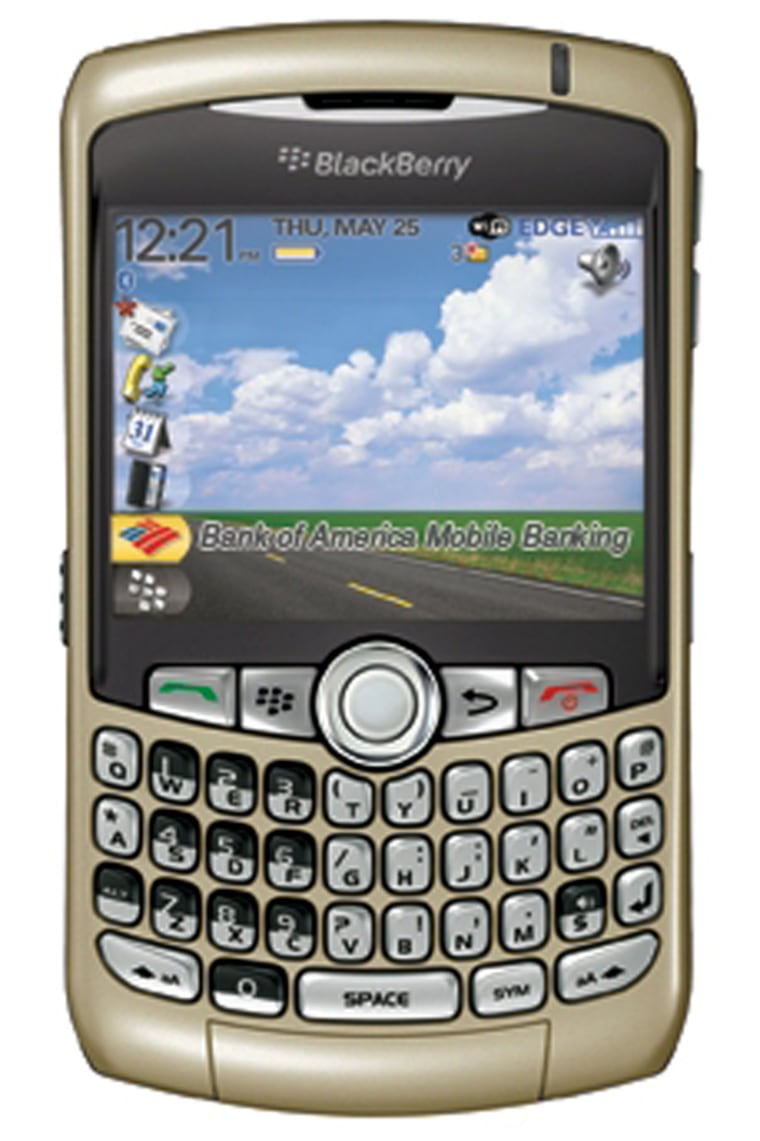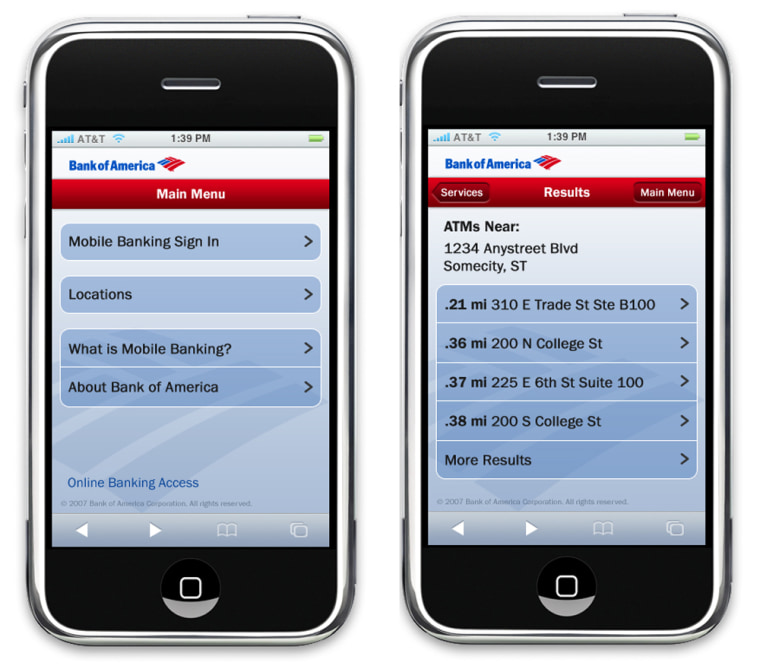Flipping around the 9,000 channels we have on our TV, I was looking for something good to watch. By my side, as always, my cell phone.
I paused for a moment at one show when I saw a name I recognized. “What has she been doing for the last few years?” I wondered, and picked up the phone.
No, I didn’t call her. I looked her name up on the Internet, using Google search on the mobile Web of my smartphone (a Treo). I’ve come to rely on the mobile Web more and more, to compare prices when I’m out shopping, to check directions and e-mail, to get a quick news fill.
That's the case for more and more users whose smartphones have Web access. But it's Apple’s iPhone that may be mobilizing the mobile Web in the same way the company’s iPod made digital music a reality for mainstream users.
“What the iPod did was not only sell a whole bunch of iPods, but it helped really activate and catalyze the digital music industry,” said Mark Donovan, senior analyst for M:Metrics research firm.
Now, Apple has “catalyzed the telecommunications industry to think more creatively about devices and mobile Web experiences. They’ve demonstrated that if you put the right mix of a (data) plan and the right device in people’s hands, they really will use this stuff.”
M:Metrics, which has been researching the mobile market since 2004, found that the iPhone is “the most popular device for accessing news and information on the mobile Web,” with 85 percent of iPhone users doing so in the month of January.
That contrasted with 58.2 percent of other smartphone owners, and 13.1 percent of the total mobile market.
“It hands-down has become the device that is driving the most people to the mobile Web,” said Donovan.
“It’s creating buzz among consumers that it can be pleasant and useful accessing the Web from your mobile phone,” said Greg Sheppard, chief development officer of iSuppli Corp. market research firm.
“There’s interest growing, that hey, you can keep up with social networking sites, you can do mobile banking,” from your phone, he said.
“These are things that are nice to do during the day, maybe when you don’t want to use the office computer, so you slip into another room and do something real quick on your phone, and then get back to work.”
Note Sheppard’s wording: “You… do something…” on your phone, vs. use it to make a call.
Unlimited data plan a draw
AT&T is the exclusive carrier of the iPhone, and offers an unlimited data plan as part of its voice and data package, starting at $59.99 month. The iPhone also has Wi-Fi Net access. Both the flat rate data plan and Wi-Fi are incentives to using the mobile Web.
“Users don’t have to worry about getting nickel-and-dimed” for Net access, or facing “crazy phone bills,” Donovan said. “With that, you begin to look at the mobile Web as a utility that you can access whenever you want, for whatever you want.”
Douglas Brown, Bank of America senior vice president in charge of e-product development, said more than 25 percent of the bank’s 625,000 active mobile users are iPhone owners.
The bank designed a mobile Web application to work with the iPhone before it launched last June. It also provides mobile Web access for other phones, including smartphones such as Research In Motion’s BlackBerry and HTC touchscreen phones which are similar to the iPhone.

“What the iPhone has done is to awaken the industry and the consumer demand for a mobile Web experience,” Brown said.
“We’re now seeing in the wireless industry where consumers are buying a package — not just the voice service, but data services as well. Then there’s the issue of the device itself, and what drives and improves that experience.”
Newspapers, struggling in part because of the gravitation of readers to the Web, are among the industries viewing the mobile screen as key.
“The mobile Web is another important channel for consumers to engage with our journalism,” said Michael Zimbalist, The New York Times’ vice president of research & development operations, in an e-mail interview.
“We expect that in the future, it may become the very first touchpoint for our brand with new readers.”
He noted that in the past year, “we’ve witnessed extraordinary growth in our mobile page views,” with The Times’ mobile site having 14 million page views in February, 2008.
“At the beginning of 2007, it was only 500,000,” he said.
Google's stake in the game
Matt Waddell, product manager with Google’s mobile team, said the iPhone symbolizes a melding of three important aspects that are making the mobile Web happen: “a phone with a capable Web browser (Safari, in the iPhone’s case), a device with an increased amount of attention to the user’s experience and flatter and flatter data plans.
“As these three factions become more prominent in devices overall, we expect to see an increased amount of mobile Web usage overall,” he said.
Google has a stake in that happening with its Android mobile software platform, endorsed by many key players in the tech industry, and so far by mobile phone companies T-Mobile and Sprint Nextel.
Android is a free and “open” platform for cell phones that could make the mobile Web easier for software developers to maneuver by essentially have one development standard.
“As a developer, you want to make your application and your experience available to as many users as you possible can,” Waddell said.
“The current state of affairs is that you invest a lot of time and resources optimizing your application for each individual mobile platform — BlackBerry, Windows Mobile, Symbian and others.” (Msnbc.com is a Microsoft-NBC Universal joint venture.)
There are other indications that the mobile Web is morphing quickly.
Last week, at CTIA-The Wireless Association’s annual trade show in Las Vegas, Yahoo unveiled its OneSearch program, which will let consumers use voice commands for mobile search. Amazon launched a new service, TextBuyIt, which lets cell phone users text-message, using the phone’s keypad, to search and buy products from Amazon.
From lighter to more utilitarian uses
In its recent study, M:Metrics said that while the mobile market grew 9.5 percent from January 2007 to January 2008, use of the mobile Web grew 11.5 percent.
Doesn’t sound like a lot, but “when we look at what people are doing, we see double-digit growth in the number of people using their mobile Web browser to get traffic information, restaurant and movie information, stock quotes, maps, sports, weather,” said Donovan of M:Metrics.
“I believe what that shows us is that given a good (mobile Web) browsing experience, people want to depend on the Internet as a utility to help their lifestyles.
“A couple of years ago, what were people doing on the mobile Web? Maybe they were looking at sports scores or horoscopes — ‘snacking distraction,’ " he said.
“There wasn’t yet an infrastructure, or the right devices there to help them really improve their moment-to-moment life, whether it was figuring out how to get from Point A to Point B, whether there was going to be traffic along the way, or a restaurant where they’d want to stop in and eat. I think that is an interesting shift.”
Waddell, of Google, said, “It was once assumed that the mobile Web was very much a second-class citizen, relative to the Web on the desktop.
“As we see the quality of mobile Web browsers increase — and they are, at a rapid clip — the mobile Web will cease to be a second-class citizen. And the consumer is going to start to equate a high-quality device with a high-quality Web browser.
“It will become a standard part of the mobile experience, in the same way that people just expect to be able to browse a rich Web on the desktop.”
